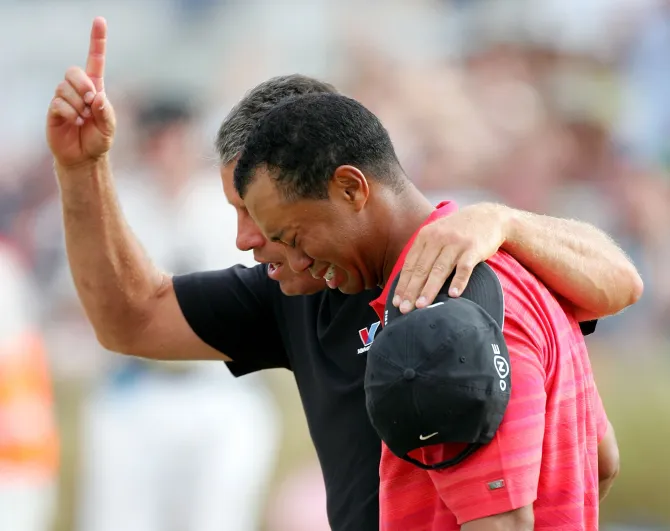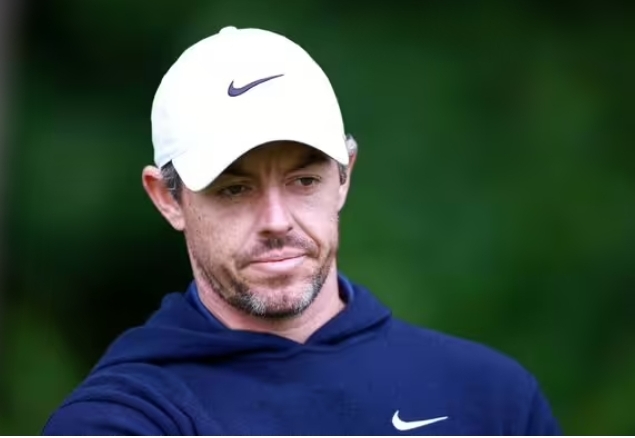Nobody had seen cold-blooded Tiger Woods cry before spine-tingling…..
Tiger Woods was renowned as a cold-blooded competitor on the golf course, a trait instilled in him by his father, Earl Woods, from a young age. Earl’s rigorous training shaped Tiger into one of the most mentally and physically resilient athletes in history. This relentless preparation culminated in Tiger’s triumphant victory at the 2006 Open Championship at Royal Liverpool, a win that came just two months after Earl’s death in May.
Despite the recent loss of his father, Tiger displayed remarkable composure over the 72 holes at Hoylake. Known for his strategic prowess, he famously used his driver only once during the entire championship, showcasing a masterclass in tactical brilliance and ball striking to secure a two-stroke victory over Chris DiMarco.
The 143rd Open Championship will always be remembered not only for Tiger’s exceptional performance but also for the emotional moment that followed. For the first time, the world saw Tiger Woods cry—a sight unimaginable to those who had followed his career. This display of vulnerability was a stark contrast to the steely demeanor he had maintained throughout his career, a demeanor shaped by Earl’s teachings.
From an early age, Earl trained Tiger to block out emotions that could interfere with his performance. He would test Tiger’s mental toughness by creating distractions during practice, teaching him to remain focused under any circumstance. Earl once recounted how he would drop his bag of clubs or throw golf balls in front of Tiger’s shot to test his composure. Tiger’s ability to remain unfazed and perform under pressure became his hallmark.
Earl’s training undeniably crafted one of the greatest sporting minds, but it also raised questions about Tiger’s emotional well-being. When Tiger’s personal life unraveled in 2009 amid revelations of multiple affairs, many scrutinized his personality, wondering if his unique upbringing had left him emotionally detached.
Tiger himself acknowledged the intensity of his father’s methods, explaining how Earl would push him to his breaking point but never beyond. This relentless conditioning eventually made Tiger impervious to distractions and emotional turmoil, a skill that proved invaluable on the golf course.
At Hoylake in 2006, Tiger channeled his father’s teachings to suppress the profound grief of Earl’s death. However, once the final putt confirmed his victory, the emotional walls he had erected came crashing down. In a rare moment of vulnerability, Tiger cried in the arms of his caddie, Steve Williams. For many watching, it was the first glimpse of the human side of a golfer who had always seemed superhuman.
Reflecting on his victory, Tiger expressed how proud his father would have been. Earl had always emphasized the importance of strategic thinking and emotional control on the golf course, principles Tiger adhered to throughout his career.
Tiger’s resilience did not wane with time. He defied the odds to win The Masters in 2019, despite doctors doubting his return to top-level golf. Even a near-fatal car crash couldn’t prevent him from making the cut at Augusta in 2022, 2023, and 2024.
As he arrived at Royal Troon for The 152nd Open, questions loomed about his future in competitive golf. Yet, when asked if his belief in his ability to win had faltered during challenging times, Tiger’s response was a resolute “No.”
In recent years, a combination of fatherhood, injuries, and a less competitive career has softened Tiger’s public persona. His tears on the 18th fairway at St Andrews during The 150th Open revealed a man now willing to embrace his emotions.
The magic of 2006 at Royal Liverpool remains a testament to Tiger Woods’ extraordinary journey. It was a moment so powerful that even the most stoic athlete in history could not escape its emotional impact.






